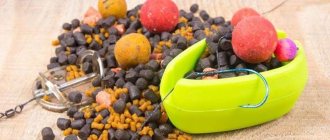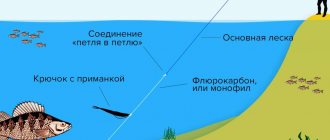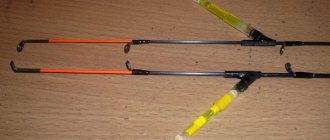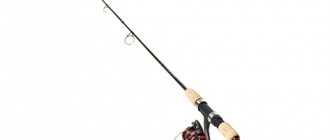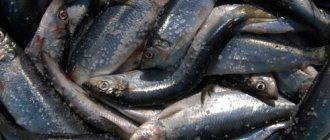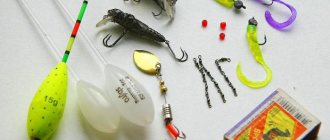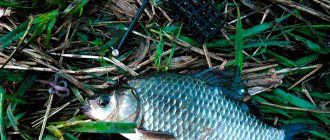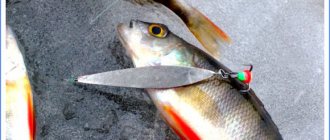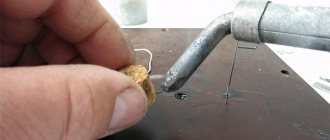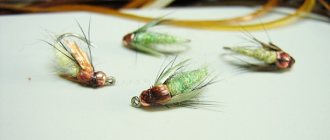Bombard. Several years ago I became interested in cunning devices that looked like strange-looking floats, which in the catalogs of various fishing companies were called “Bombarda”, then “Sbirulino”, then “Balerina”, or “Saltarello”.
I might have overlooked this information, but life has arranged everything in such a way that, to my greatest pleasure, for the last 10 years my main job has been searching on the world market for new promising fishing products for the Latvian market.
They say that even a bear can eventually be taught to ride a bicycle. This happened to me too. Over time, I came up with a very simple rule for myself, based on personal experience and common sense - if any bait or tackle appears in the catalogs of well-known companies for several years, it means it’s not for nothing, it means there’s some meaning and some kind of benefit.
After all, not a single capitalist will waste time and money promoting a bad product that no one needs. Moreover, we can continue this chain of reasoning and assume with a high degree of probability that since a product appears for several years in a row in the catalogs of not one, but several well-known companies.
This means that it sells well, obviously because it is really effective, and the costs of purchasing it are recouped by frequent bites and, as a result, good catches. Guided by this conclusion, I decided to definitely try the bombard in practice.
Note:
- For an observant and savvy buyer, the above rule can serve as a universal guide when purchasing new unknown goods - each new product has some new property that makes sense to test in local conditions on a pond!
Unfortunately, three years ago I didn’t even have a diagram for assembling this strange gear, but through trial and error I very quickly realized that the main purpose and secret property of the bombard was that the sliding weight (which is essentially a bombard loaded with a brass weight) ), allows you to cast very small baits very far with virtually no risk of the leash getting caught on the main line.
Bombard
On one of my first experimental fishing trips, using a bombard, I made 150 casts of a tiny wobbler weighing 1.5 g against a very fresh wind at a distance of 30 to 50 meters and did not get a single tangle on the main line!!! I was absolutely delighted that the eternal problem of spinning anglers with long-distance casting of small baits was solved so simply.
Today, with the invention of the bombard, analyzing the newly opened opportunities for spinning anglers, I would venture to compare the significance of this fact with the advent of inertialess reels in my time. Having understood the principle of operation of the gear and all its potential capabilities, I continued my experiments.
Of course, three years ago I didn’t have a special rod for bombarda (3.7+4.5 m), so I purely intuitively began to use a special (Latvian style) spinning rod with a length of 3.60 m, the amazing possibilities of which I discovered for me shortly before this is the most famous innovative fisherman in Latvia, Cheslav Pavlovich Ugarenko (better known in the circle as a fisherman under the pseudonym “Professor”).
In addition to its unique versatility (perhaps I’ll talk about this in the next issue of the magazine), such a spinning rod (3.6 m) allowed me to use fairly long leashes, the length of which is also dictated by the need to distance the real target, which is the bait, from the false one - the bombard itself , which the fish often takes as the object of attack.
By the way, apparently for this reason the latest bombard models are produced transparent. During my experiments, I tried almost all possible options for bait and came to the conclusion that when fishing with a bombard, almost any known artificial bait is suitable, from fly fishing fly No. 16 to 3-5 gram “giant” wobblers.
Mini and micro wobblers, absolutely tiny spinners, spoons, streamers, fly fishing flies of almost any size - from salmon “tubes” to grayling nymphs, artificial and live worms, maggots, vibrotails, twisters, even floating dough (!!!) - everything goes into action. For the sake of experiment, I was able to catch even bleaks using this wonderful tackle and fly No. 16!
Note:
- Lures weighing more than 3-5 g are easier to cast using the classic spinning method.
After the bombard revealed its unique capabilities to me, my arsenal of fishing methods and techniques expanded at least 2 times. Bombarda gave me a feeling of independence from the bottom topography and the nature of the reservoir, from what type of fish is currently active, what insects or other living creatures it feeds on, and at what depth it searches for its prey.
Being in a free search for signs of the activity of this or that fish, thanks to the properties of the bombard, I was able to easily and quickly switch while fishing from one object of hunting to another, move from the lake to the river and back.
Equipment
When fishing with sbirulino, or bombarda, you can’t get by with a simple fishing rod or spinning rod, so they use special equipment. The design includes a leash from 1 to 1.5 m for bottom fishing. In this case, the length of the rod must be 3 meters or more. This type of fishing also requires the presence of a fishing reel and fishing line, which cannot be seen underwater.
Assembling fishing gear with a bombard is quite easy. The float itself is attached to the fishing line, after which a stopper is installed, followed by a swivel, which should prevent twisting. Then a leash is placed, the length of which is no more than 1 m, and the bait is installed. There are some other rules regarding snap-ins:
- The bait is attached to the bombard using a thickening.
- Between the sbirulino and the swivels you need to place a bead, which will serve as protection for the fishing knot.
- To prevent line bleeding, a lock must be installed between the float and the rod.
For such fishing, you can use both live (worms, leeches, beetles, etc.) and artificial (silicone slaves, spoons, foam balls, etc.) baits.
Bombard
In a word, no matter where the mysterious fishing roads took me, it was the bombard that always helped me to be “fully armed” (for particularly picky readers, I must note that the properties of the bombard discussed in this article in the context of using its properties to expand the capabilities of the classic spinning rod are not in no way can be considered an alternative to spinning or fly fishing).
“Bombard”, in my opinion, very successfully combines the best properties of both methods of fishing, combining them into a kind of hybrid. At the same time, it is interesting that it was this hybrid that pushed me (a convinced spinning angler) to take up fly fishing in its purest form. Thanks bombarda!!!
Note (for those who like bottom fishing):
- Please pay attention to the sinkers and feeders with a long plastic antenna tube that have appeared on sale. The principle of operation of this equipment is similar to the bombard, therefore its main property is the same, namely to prevent the leash with the attachment from tangling with the main line when casting.
- In my opinion, for donkey fishermen this property of a sliding sinker with an antenna is even more important than for spinning fishermen, since, unlike the latter, a fan of donkey fishing can detect an overlap only after the tackle has been removed from the reservoir for recasting and replacing the nozzle, that is, after a relatively a large period of time during which the hook with the nozzle will be practically inaccessible for possible bites.
Before I talk about my own experience of using the bombard, I want to say a few words on the history of the issue. Where and why was the bombard actually invented? You won’t believe it - but two years ago I was lucky - I met its inventor - the dwarf Fausto Buccella from the team of athletes "Daiva" (Italy).
Then, to my great regret, due to the tight schedule of my business trip, I was not able to take advantage of the kind invitation of the “Daiva” team to show all the intricacies of bombard fishing in a reservoir, however, during the conversation I still managed to learn something, albeit in words, but first-hand.
So - the bombarda (sometimes also appearing under the name “KNALLER”) was invented in Italy specifically for trout fishing in cultural reservoirs. Italians are literally crazy about trout fishing. Regular visitors to Latvian trout ponds have already experienced in all its “charm” its capricious character and real fighting spirit on the hook.
Main types of bombards
In order to use the bombard correctly and effectively, you must understand the principles of operation of the device and know what types of this device there are.
Today, sbirulino is used by amateur fishermen more and more often, so it is not surprising that their range is growing.
Despite their external similarity, bombards have completely different characteristics, such as volume, weight and buoyancy parameters.
Floating and sinking bombard
Based on the level of buoyancy, bombards are divided into three types:
- floating on the surface of a reservoir;
- completely drowning (drowning);
- gradually sinking (drowning).
Loaded and empty
By type, bombards are easily divided into the following groups:
- With lead sinker. Typically, lead weights are used to effectively weight bombards. The float is also provided with an empty cavity.
This model allows the fisherman to choose the volume of water to fill the inside of the float.
- With an empty internal cavity.
Every fishing enthusiast chooses for himself which model to prefer in a given case. Usually it all depends on the characteristics of fishing (winter or summer, shallow or deep).
The most productive period for catching this fish is autumn and winter. In summer, the garfish stays further from the shore, and if it comes close, it is in small scattered schools or alone. Its main food in the Black Sea is a variety of anchovy - gerbil. Dense schools of this fish swim in the thickness and near the surface of the water. During the cold season, garfish, gathering in large flocks, collectively hunt gerbils.
Sbirulino (bombard) has been used for hunting garfish in Europe for a long time, but Black Sea fishermen began to master such equipment relatively recently. Along with spinning, this is one of the most sporting ways of catching coastal sea fish that live in different layers of water.
Sargan looks very exotic, and most Russian fishermen are little familiar with its fishing in practice. At the same time, near the coasts of our seas - the Black, Azov, Baltic - garfish are found in sufficient quantities. It is also occasionally found in the north - in the Barents and White Seas.
The most productive period for catching this fish is autumn and winter. In summer, the garfish stays further from the shore, and if it comes close, it is in small scattered schools or alone. Its main food in the Black Sea is a variety of anchovy - gerbil. Dense schools of this fish swim in the thickness and near the surface of the water. During the cold season, garfish, gathering in large flocks, collectively hunt gerbils.
In Crimea and off the coast of the Caucasus coast, garfish fishing is most productive from October to January. At this time, sometimes a lot of anchovy enters the bays and port waters; it can accumulate near breakwaters and groins, as well as near open sandy and rocky boulder banks. When searching for places where anchovy accumulates and the schools of garfish that follow it, you need to take into account the direction of the wind. Often schools of anchovy feed on plankton in calm zones, but are often found in wind-blown areas.
The reel must have a spool designed for thin fishing line, since you have to fish with monofilament with a diameter of 0.10–0.12 mm. It is important to properly balance the reel under the rod so that your hand does not strain. You have to make a lot of casts - both at the stage of searching for fish exits and during the period of garfish detection. Thin line allows you to manipulate the equipment more clearly and make longer casts.
With any type of sbirulino, play along with weak bites by changing the tempo of the retrieve. More than once I have seen how a garfish, sluggishly pursuing the bait moving on top, left the distance. However, when the movement of the bait either stopped or accelerated, this made the fish more active, and it captured the prey with its sharp teeth.
Along with garfish, horse mackerel and smarida can also bite, which also pursue shoals of anchovy. Herring is occasionally caught at night and early in the morning when it feeds on the surface of the water near the shore.
When a garfish bites, you should not hook it immediately; give it the opportunity to grab the bait. Due to the structure of the long-beaked mouth, making a garfish is not always convenient.
• streamers; • wet fly fishing flies and wabiki; • nymphs; • silicone twisters; • rotating spoons; • crank class wobblers; • microoscillators.
Bombard
In Italy, the situation with catching the rainbow beauty is much worse - most of the fish have already been hooked several times and have become completely elusive to the cunning beasts. It is not at all easy to deceive such a cautious fish, wise from negative experiences of “communication” with people, therefore, as soon as a means of delivering a small bait over a long distance (and sometimes to great depths) was needed, the “bombard” was invented.
What is a bombard? The design and installation diagram of the “bombard” have been repeatedly described in the fishing press, so I will dwell in more detail on issues that have not yet received due publicity and will only briefly (in passing) mention already known facts.
Bombard design. Typically, the body of the bombard is made of balsa, inside which is a brass or lead weight. Cheaper models are made of plastic (Fig. 1).
Rice. 1
There are also bombards made of transparent material of different colors, for catching especially wary fish, universal ones with variable own weight and buoyancy by means of removable metal washers or by filling with water, luminescent - glowing in the dark for catching pike perch with live bait and vibrating due to the special shape of the model (Fig. 2).
According to the location of the sinker inside the body of the bombard, there are also several varieties, the classification of which is given below according to the system of the founders and inventors of this type of fishing - the Daiwa team (Italy).
What it is
Bombarda (other names: Italian float, or sbirulino) is functionally a kind of “hybrid” of a float and a sinker. It allows you to move baits of various types in a fairly wide range of depths. Another advantage of the bombard is the ability to cast light-weight baits over a long distance.
Externally, the bombard is a spindle-shaped float that can move freely along the main line thanks to the tube located inside. The bombard itself can be made of various materials. Bombards can have different buoyancy and colors.
Most bombards come with a built-in sinker and have a constant weight, but there are also bombards with an internal cavity, by filling which the fisherman himself determines the weight of the gear depending on the fishing method and the type of prey. Bombarda for sea fishing can have the color of sea water, be matte (this gives it a resemblance to jellyfish), dark in color or completely transparent.
Each of the considered bombard design options is used for certain fishing conditions and the capture of a specific type of fish.
Bombard
Rice. 2
- Classiche is a classic bombard, according to which most Daiwa followers today produce their products, namely, the load is concentrated in the lower part of the bombard’s body, as a result of which it plunges into the water along a very steep trajectory in an almost vertical position
- Moretto - for fishing in the middle layers of water and near the bottom. Due to the fact that the weight of the sinker is distributed along the entire length of the float body, it has a smoother trajectory of movement when diving and guiding.
- Competition - the load is concentrated in the center of gravity of the float, so the position of the float during wiring remains more or less parallel to the direction of tension of the fishing line, which, in turn, makes the equipment more sensitive to maneuvers and bites. In addition, by manipulating the rod and the speed of the retrieve, it is possible to give the bait special mobility, forcing the bombard to move around its center of gravity up and down and from side to side.
- Match - an elongated weight is located in the head part of the bombard, which gives its movement during posting a trajectory close to horizontal. In addition, they tend to sink to the bottom with their upper part forward.
- Magic is the most sensitive of all models, and weights located at opposite ends of the bombard’s body give the bombard a horizontal position in the water column, even if the line is not stretched.
Markings (indicating the action of the bombard in water). For simplicity, in European catalogs, according to the degree of buoyancy, bombards are divided into floating (floatign), slowly sinking (sinking) and quickly sinking (fastsinking).
Fishing technique
Sbirulino opens up wide possibilities for fishermen in fishing techniques. Thanks to the heavy float, making long casts with light bait is not difficult. But how to do the wiring has to be decided right on the pond.
The technique of fishing with a bombard depends on the type of fish for which the angler came:
- For example, insects or their imitations are used to catch a chub or asp on a river. The equipment is thrown into a promising location, and then alloy wiring is done. The bait floats realistically with the current, tempting the fish to bite.
- If you want to catch sabrefish or rudd, which feed in the middle layers of water, then choose a slowly sinking float and a wet fly. After casting the rig, a pause is made to allow the bait to sink to the desired depth. Wiring is performed by slow, uniform rotation of the coil. The tackle can be equipped with several hooks, then you can catch several fish in one trip.
- When hunting for pike perch, you need to deliver the bait to deep areas of the reservoir. The easiest way to do this is with a fast-sinking bombard. You can choose live bait or artificial fish as bait. While retrieving, you should pause and twitch the rod tip. It is important that the bait is always in the bottom horizon.
Fishing with sbirulino allows fishermen to take a creative approach to their favorite pastime.
This tackle forgives even mistakes that may occur during the process.
You just need to decide on the type of fish for fishing, and then assemble gear suitable for the conditions of the reservoir, especially a bombard float. Then a good bite and pleasure from active recreation will be guaranteed.
Bombard
However, in good expensive sports models, usually made in the homeland of the bombard - in Italy, there may also be a more subtle division, namely, the first number on the float body indicates the own weight of the bombard in grams (gr), and the second - the lifting force (indicated by the letter G or the word “GALL”), which acts on the body of this bombard in the water.
The ratio (difference) of these two numbers reflects the degree of buoyancy of each specific float and thereby determines the depth and speed of immersion, the weight and degree of buoyancy of the bait used and, finally, the type of wiring. You will learn how to fish in strong currents with a Cralusso Torpedo float from this article.
At the same time, it becomes clear and predictable the impact on the sinking speed of the tackle you are using at this particular moment of the bait, namely, sinking components of the tackle, such as carabiners, metal leashes and spoons or, for example, a sinking fishing line will speed up the dive and, on the contrary, floating (the same wobbler) - they will slow it down.
Knowing and understanding this simple principle, by selecting the appropriate weight of the bait and the degree of its buoyancy, as well as the components of the equipment listed above, it is possible to ensure that the bombard (and with it the bait) acquires neutral buoyancy in the water, similar to the wobblers already known to most anglers - suspenders.
Components of equipment.
Line - depending on the situation, as the main line I use regular nylon or special fast-sinking fluorocarbon line with a diameter of 0.18 to 0.25 mm, or FIRELINE cord with a diameter of 0.15 to 0.17 mm.
Most often, the cord is used in cases where a large number of hooks are expected or when fishing is to be done at a fairly large distance, as well as when using a rather rough “from birth” spinning rod instead of a special ultra-sensitive “bombard” one.
How to catch
Sbirulino is used for fishing with lures of different types, shapes and sizes. Make smooth and slow retrieves, twitch the end of the spinning rod and tighten the line. The moment of bite is easily felt due to the soft design, since the fishing line passes through the float tube.
The EC float allows you to use a fly as bait. You can explore large areas of the water area while standing in one place. After casting, you need to wait a little for the bait to drop to the set depth and then make the retrieve.
Improvised movements of the rod attract different fish. Depending on the situation, the following actions are appropriate:
- pull-ups with short pauses;
- monotonous wiring;
- throwing the equipment up;
- small twitches;
- "trembling" of the fishing line.
For long casts, you will have to practice a little, and then choose which option is most suitable: over the head or from the side, fly fishing or “mast” cast. To prevent the float from getting tangled when it falls on the water, you need to hold the line a little.
Bombards, which sink slowly, are suitable for any thickness of water and long distances; surface sbirulinos allow you to catch perch and pike within a radius of 0.5 m.
Bombard
In the last two cases, even a timely sharp hook may turn out to be late and ineffective (or you risk missing it altogether), for the simple reason that ordinary monofilament fishing lines stretch by approximately 5-10% (when casting, for example, 30 meters, the stretch is something like 3 meters), and the fish often manages to sense the deception and spit out the bait.
“FIRELINE”, on the contrary, is practically inextensible, therefore, firstly, the slightest hint of a bite is transmitted through it, like a telegraph wire, to the fisherman, and secondly, the hook is almost instantaneous and very hard. Moreover, often, if there are really sharp hooks and there is no cord, the fish “hangs itself” on them (is hooked), against the will of the person.
Note:
- I have tried other cords with less success. The fact is that almost all cords, except for “FIRELINE”, have a pronounced braided structure and for this reason make quite a lot of noise when passing through the rings. It seemed to me that this noise scared away the fish, but this conclusion, of course, may be a common misconception due to the author’s subjective perception of this phenomenon.
- However, when recommending “FIRELINE”, I always remember that science does not stand still and it may well happen that by the time this article is written, analogues of “FIRELINE” may appear on sale, superior or equal to it in properties, but which I do not currently know.
Swivels are a very important part of any fishing equipment, including bombards. When hooked correctly, a worm or a pair of maggots rotates like a small propeller when reeling, so the risk of the fishing line twisting is very high.
Rice. 3
A special triple or even quadruple swivel, consisting, as can be seen from the name and fig. 3 of several fastened one after another in a kind of chain of ordinary swivels.
The most popular sizes are from No. 14 to No. 20. I advise you to use the most expensive swivels of Japanese origin, because the manufacture of this seemingly simple product requires impeccable quality of materials and precision fitting of all parts, which is incompatible with mass Chinese production.
Posting options
There can be several ways to feed a fast-sinking bombard. The main thing is a banal uniform wiring with a slow monotonous reeling of the fishing line. The equipment is thrown to a given point, immersed to the bottom and driven 20–30 cm above it.
Tips for fisherman: Murmansk sea fishing from Ura lips - Let's take it step by step
The second wiring option is stepped feed. The bombard is carried out like a jig bait. First, it is immersed to the bottom. Then, with a few quick turns of the coil, it lifts up. This is followed by a pause, during which the rig slowly moves downwards. The bulk of bites occur during the free fall phase, less often the fish takes on the rise.
The described animation technique shows the best results in cold water, when the predator is passive. Slowly gliding bait provokes apathetic fish well, awakening its appetite. Often this is the only way to provoke a bite.
When using streamers and fly fishing flies, wiring with jerk elements shows good results. The fisherman lowers the equipment to the bottom, but does not allow it to touch him. Feeding is carried out 10–30 cm from the bottom. It is a series of short jerks with minimal pauses. This technique is most relevant when fishing for asp and perch. Suitable for pike perch, sabrefish, grayling and other underwater inhabitants when they feed in the lower layers.
When fishing with bombards, special telescopic or plug rods are used that are longer than spinning rods, from three to five meters in length. This is due to the fact that the leash in the rig is often very long. Unlike spinning rods, fishing rods are much softer and lighter, and are equipped with a large number (11–15) of rings. These rods are characterized by a parabolic action and a sensitive tip.
Group: Crimean Fishermen's Club - moderators Messages: 5311 Thanks: 6507 Registration: 22.3.2009 Age: 58 From: Simferopol User No.: 460 Favorite type of fishing: float Fishing experience: more than 40 years Name: Sergey
When fishing with bombards, special telescopic or plug rods are used that are longer than spinning rods, from three to five meters in length. This is due to the fact that the leash in the rig is often very long. Unlike spinning rods, fishing rods are much softer and lighter, and are equipped with a large number (11–15) of rings. These rods are characterized by a parabolic action and a sensitive tip.
The parabolic action ensures smooth casting and contributes to a long casting range, soft and sensitive movement of the bait, and allows you to successfully catch large fish using thin fishing lines. The thin and very flexible tip helps to instantly detect the bite of even cautious and indecisive fish, and you need to respond to it with an immediate hook.
If you don’t have such a special rod, you can find a suitable one from Bologna or match rods. If it is inconvenient for an angler to work with a long rod (for example, when fishing from under overhanging branches), you can successfully use a regular spinning rod. The choice of rod length depends, first of all, on the body of water, as well as on the weight of the bombard.
At sea, rods 4.5 meters long with 20-70 grams of dough and a stable, sensitive tip are usually used. On small bodies of water, the rod is selected to be of shorter length and lighter class. It should be convenient for fishing with a long leash with light baits, and also allow you to cast the equipment normally.
(based on materials from the Internet)
Nikolaevich
View profile
Group: Experienced fishermen Messages: 1140 Thanks: 963 Registration: 13.3.2010 Age: 40 From: Simferopol User No.: 2343 Favorite type of fishing: sea fishing Fishing experience: 11-15 years Name: Denis
gawrysa
View profile
Group: Crimean Fishermen's Club Messages: 486 Thanks: 491 Registration: 1.4.2009 Age: 43 From: Simferopol User No.: 533 Favorite type of fishing: spinning Fishing experience: 7-10 years Name: Ivan
When fishing with bombards, special telescopic or plug rods are used that are longer than spinning rods, from three to five meters in length. This is due to the fact that the leash in the rig is often very long. Unlike spinning rods, fishing rods are much softer and lighter, and are equipped with a large number (11–15) of rings. These rods are characterized by a parabolic action and a sensitive tip.
(based on materials from the Internet)
I couldn’t find these special rods on the Ukrainian market, but do we have them in stock in our stores?
Dimonskiy
View profile
Group: Crimean Fishermen's Club Messages: 3596 Thanks: 2935 Registration: 10.6.2008 Age: 39 From: Sevastopol User No.: 29 Favorite type of fishing: feeder Fishing experience: 21-25 years Name: Dmitry
Nikolaevich
View profile
Group: Experienced fishermen Messages: 1140 Thanks: 963 Registration: 13.3.2010 Age: 40 From: Simferopol User No.: 2343 Favorite type of fishing: sea fishing Fishing experience: 11-15 years Name: Denis
rossomaha
But never forget that fishing in a place accessible to everyone can also be made surprisingly interesting and exciting. If you think you know absolutely everything about the place and the fish you've been catching for years, then think again.
Published November 13, 2015
I really want to develop the topic of fishing accessible to everyone. It is probably much easier to get into wild places where there is no fishing pressure, and show off your fishing skills there. Long-distance expeditions, long-hour helicopter flights are very cool and if you have the opportunity to participate in this, then be sure to participate.
But never forget that fishing in a place accessible to everyone can also be made surprisingly interesting and exciting. If you think you know absolutely everything about the place and the fish you've been catching for years, then think again.
Tips for fisherman: Spinning rod for sea cod fishing - Features of choice
Knowledge from childhood
How to catch garfish before
First experience of fishing with bombards
Advanced Sochi fishermen
Try it and go for it!
At different times of the year you can catch different fish with bombards, the season is not the same. Therefore, it is impossible to paint a graph for fish species here. You need to know that before dark, predators approach the shore and fishing here becomes more successful at this time of day. Try, experiment, look for something new, your own - your efforts will definitely be rewarded! Good luck to you, my dear readers!
Profile Group: Users Messages: 35 Registration: 3.3.2014 User No.: 2804 Name: Roman Fishing gear: Spinning Metro/District: Akademka
Welcome to our forum! You are logged in as a guest and can read the forum. To send messages you need to log in with your login or register.
(Login | Registration)
DonArchibaldos
Profile Group: Users Messages: 30 Registration: August 30, 2013 User No.: 1875 Name: Evgeniy Fishing gear: Feeder, spinning rod Metro/District: Nevsky district
Good day to all!
Does anyone have experience in fishing with a bombard with a fly in our area, namely in the Neva? This method seemed interesting to me, so I bought several bombards of different weights on sale, and today the flies I ordered on eBay arrived. But somehow I couldn’t find any information on fishing with a bombard + fly in the Neva.
Post edited by DonArchibaldos
— 6.3.2014, 20:32
Roman_A
Profile Group: Users Messages: 35 Registration: 3.3.2014 User No.: 2804 Name: Roman Fishing gear: Spinning Metro/District: Akademka
Good day to all!
Does anyone have experience in fishing with a bombard with a fly in our area, namely in the Neva? This method seemed interesting to me, so I bought several bombards of different weights on sale, and today the flies I ordered on eBay arrived. But somehow I couldn’t find any information on fishing with a bombard + fly in the Neva.
DonArchibaldos
Profile Group: Users Messages: 30 Registration: August 30, 2013 User No.: 1875 Name: Evgeniy Fishing gear: Feeder, spinning rod Metro/District: Nevsky district
Mostly - the process (what kind of wiring and in what layers to conduct, what weight of bombard to choose, sinking/floating bombard).
tamil
Profile Group: Users Messages: 3730 Registration: 12.2.2012 User No.: 418 Name: Tamara Fishing gear: feeder and spinning rod Metro/District: Orzhitsy Lomonosovsky district
That year I tried fishing with bambards. I liked the floating one, which is filled with water. And slowly sinking. I got a good bite of sabrefish on it. This fish stays 1.5 meters from the bottom. I attached the bait to a worm hook. Using a feeder, I threw bait with the addition of coconut shavings into the fishing area. This year I will continue to fish with it.
One of the videos on the bamyard. And there is a lot of information about bambarda on YouTube.
Roman_A
Profile Group: Users Messages: 35 Registration: 3.3.2014 User No.: 2804 Name: Roman Fishing gear: Spinning Metro/District: Akademka
exzorik
Profile Group: Users Messages: 243 Registration: 11/18/2013 From: Len region, Kingisepp User No.: 2162 Name: Sergey Fishing gear: spinning rod, wobbler Metro/District: Len region Kingisepp r. Meadows
KruGer
Profile Group: Users Messages: 4877 Registration: 16.8.2013 From: St. Petersburg on weekdays, in free time - reservoirs of the North-West User No.: 1833 Name: Oleg Fishing gear: Spin and only spin! Metro/District:Prosveshcheniye
exzorik
Profile Group: Users Messages: 243 Registration: 11/18/2013 From: Len region, Kingisepp User No.: 2162 Name: Sergey Fishing gear: spinning rod, wobbler Metro/District: Len region Kingisepp r. Meadows
tamil
Profile Group: Users Messages: 3730 Registration: 12.2.2012 User No.: 418 Name: Tamara Fishing gear: feeder and spinning rod Metro/District: Orzhitsy Lomonosovsky district
Nikolai
Profile Group: Users Messages: 246 Registration: 11/18/2013 User No.: 2163 Name: Nikolay Fishing gear: spinning Metro/District: Peterhof
Astrakhan
Where the asphalt comes into the water there are no fish and for a long time.
Profile Group: Users Messages: 681 Registration: 5/26/2014 User No.: 3251 Name: Alexey Fishing gear: Feeder
Good day to all!
Does anyone have experience in fishing with a bombard with a fly in our area, namely in the Neva? This method seemed interesting to me, so I bought several bombards of different weights on sale, and today the flies I ordered on eBay arrived. But somehow I couldn’t find any information on fishing with a bombard + fly in the Neva.
Serge K.
Profile Group: Users Messages: 480 Registration: 1/14/2014 User No.: 2413 Name: Sergey Fishing gear: Jig-spinning Metro/District: Kirishi
kabanidzzze
Profile Group: Users Messages: 154 Registration: 6/15/2015 From: St. Petersburg User No.: 5772 Name: Valery Fishing gear: spinning, feeder, carp, float
I went on reconnaissance to Staraya Ladoga on the Volkhov with a friend. A friend caught a fly/beetle with neutral sbirulino. Spinning 3.5 m. From the shore. It was the first time I saw such tackle.
During an hour of reconnaissance, a friend got 1 small asp, 300 grams (released). Another one was caught almost under the feet of the bridge, it looked to be about 1.5 kg, but in the absence of a landing net it was not possible to take it - it fell off.
Tips for fisherman: Sea fishing from the shore on the Black Sea - Choosing the best
The tackle is interesting, because... makes it possible, as I understand it, to play with the depths with a light bait + it is not so striking to such a cautious fish as an asp.
I also bought it and will train casting in Finland
Post edited by kabanidzzze
— 2.7.2015, 15:16
vadim 79
Profile Group: Users Messages: 408 Registration: 1/27/2014 From: St. Petersburg User No.: 2527 Name: Vadim Fishing gear: spinning, trolling, fly fishing Metro/Region: m. Veteranov Ave.
artemei
Profile Group: Users Messages: 549 Registration: 1/14/2014 User No.: 2408 Name: Artem Fishing gear: legal fishing gear Metro/District: Nevsky district
Vadim, what length of spin did you use?
vadim 79
Profile Group: Users Messages: 408 Registration: 1/27/2014 From: St. Petersburg User No.: 2527 Name: Vadim Fishing gear: spinning, trolling, fly fishing Metro/Region: m. Veteranov Ave.
artemei
Profile Group: Users Messages: 549 Registration: 1/14/2014 User No.: 2408 Name: Artem Fishing gear: legal fishing gear Metro/District: Nevsky district
Thanks for the comprehensive answer!
vadim 79
Profile Group: Users Messages: 408 Registration: 1/27/2014 From: St. Petersburg User No.: 2527 Name: Vadim Fishing gear: spinning, trolling, fly fishing Metro/Region: m. Veteranov Ave.
However, today the bombard is most often used by workers of the blue Neva for fishing:
Bombard
Otherwise, and this is more than half of the “yellow” assembly swivels sold in stores today, it will not fulfill its direct function - to prevent the line from twisting and will be suitable only for use as a small sinker.
Leashes - I use several types of leashes, depending on the degree of toothiness of the intended prey and the number of chances of accidental bites of small pike - the main culprit for the irretrievable loss of my best baits.
- the classic (trout) version is a piece of fishing line 12 meters long and with a diameter of 0.12 to 0.2 mm. By combining a floating bombard with a sinking line, or vice versa, a sinking bombard with a floating line, you can get a very interesting “pattern” of wiring, and the use of invisible fluorocarbon fishing line sometimes allows you to seduce even the most sleepy and cautious fish.
- power option for places with a large number of hooks. A “FIRELINE” cord with a diameter of 0.1-0.12 of the same length as in the first case is used. In this case, of course, the same cord must be used as the main fishing line, but with a thicker diameter - 0.12-0.17 mm.
- pike version with a metal leash. For these purposes, metallized (covered with metal weave) leash materials “Supratress” and “Powerlex” (Fig. 4) from France are the best suited, which, thanks to their fantastic elasticity, can be tied with a special fishing knot (Fig. 5), or ready-made leashes from “ metallic silk" material "Supralex" (Fig. 6) from the same manufacturer, which is a complex structure of 49 thin steel wires intertwined in a special way.
Rice. 4
Rice. 5
The structure of the last-mentioned material is formed by successively weaving 7 steel wires into a kind of braid, which are then intertwined again. In fishing catalogs, such material is indicated by the sign 7x7. It is “Supraflex” that I prefer to other leader materials, as it is the thinnest and most durable.
How to equip a fishing rod with a bombard?
For equipment you will need the following elements:
- A light and soft rod, the length of which should not exceed 4 meters. In order for the load to be uniform, many rings of different sizes are installed on it.
- A spinning reel, you can use any model, as long as the quality is good. Also, it must completely match the fishing rod in terms of weight and size.
- You need to take a fishing line that is strong and inconspicuous, since you will be catching cautious fish. You can use the most common nylon fishing line with a diameter of 0.25 mm. The larger the fish you plan to hunt, the stronger the fishing line should be.
- The swivel, which is necessary to prevent the line from twisting, can be triple or consisting of several elements. The most optimal sizes are 14-20. You need to take the highest quality possible so that it fully does its job.
- To separate the bait from the float, the leash must be long.
- The bombard itself.
- You can purchase any hooks, as long as they are of high quality and sharp. The choice depends on the type of fish and types of bait. For light and live baits, use single baits, and for artificial baits, triple baits.
- For a bombard, the bait should be light. You can take flies, dough, small fish, insects. For artificial bait, you can take a light wobbler.
- No sinker needed. But, if you plan to fish with light bait near the very bottom, then you can use it for weighting.
Bombard
Rice. 6
It can also theoretically be tied with a knot, but I still prefer ready-made leashes assembled using a special technology (without metal tube clamps) in France.
Of course, I tried to use other leader materials, such as, for example, “KEVLAR” and the same “FIRELINE”, but my experience showed that their small diameters cannot withstand the sharp teeth of our pike, and there is no point in using thicker diameters, since they will look too rough in comparison with the modern materials mentioned above. Based on personal experience, I believe that the leash length can be 7.5-10 cm - maximum 15 cm.
Note:
- When using ready-made leashes, it is necessary, if possible, to get rid of 2 leash parts that impair the performance of your micro-lure - carabiners and fasteners (or use a ready-made leash with loops). This must be done especially since the triple carabiner connecting the main fishing line with the leash successfully compensates for possible twisting moment without additional “help”.
- If you can’t do without it, I advise you to use the lightest and most “transparent” fastener for water, made of hardened wire without any metal planes that could, under the influence of the water flow, have any significant negative impact on the performance of the bait (Fig. 7a , 7b).
Bombard
Rice. 7 a
Rice. 7 b
- When fishing with artificial flies, especially lazy fishermen, corrupted by the modern abundance of all kinds of equipment in stores, can use the original German micro-fastener (Fig. 8). 4.
Rice. 8
Bombard
Hooks - a general requirement - use the sharpest, most durable and... expensive! - as many as you can find. The best, in my opinion, are the “GAMAKATSU” and “OWNER” hooks. They are much stronger than others and therefore, other things being equal, hooks made of thinner wire can be used in proportion to the expected catch, which allows the tip of the hook to dig into the soft tissues of the fish’s mouth with less force - such hooks literally “stick” to your hands.
If we add to this advantage of thin hooks their lower visibility for fish and lower weight, which affects the action of the bait, then their relatively higher price (3-5 times more expensive than other good imported hooks) becomes to a certain extent understandable and justified.
Note:
- Theoretically, it is possible to save some money when buying a rod and reel by choosing a compromise between an acceptable price and average quality. In the case of fishing line, swivels and especially hooks, there should be no compromises.
- These three components of fishing equipment are the last thing you need to save on, because... biting a huge fish from your dreams does not happen very often. It is likely that this bite will be your only chance, so the tackle with which you go out to the pond should always be in perfect condition - the best fishing line, the best hooks, the best swivels!!!
A few words need to be said about the shape of a single hook used when fishing for trout with live bait (worms and maggots), as well as with small “vibrating tails”. Such a hook must combine three main properties:
- A long fore-end (possibly with additional bits) so that the bait stays in place longer and does not get knocked off when casting.
- A sufficiently wide hook (the distance between the shank and the sting of the hook) so that the hook is more accurate, and the trout cannot quickly spit out the hook.
- The sharpest hook point with a relatively small barb to facilitate the penetration of the hook through the soft tissues of the fish’s mouth when hooking.
The hook should be so sharp that not even the most careful touch of the fish on the bait goes unpunished. On a really sharp hook, the fish doesn’t just “sit on its own” - there are quite frequent cases when a fish that misses or “swims by” itself “grinds” against the sharp sting against your will and contrary to your “skill.”


